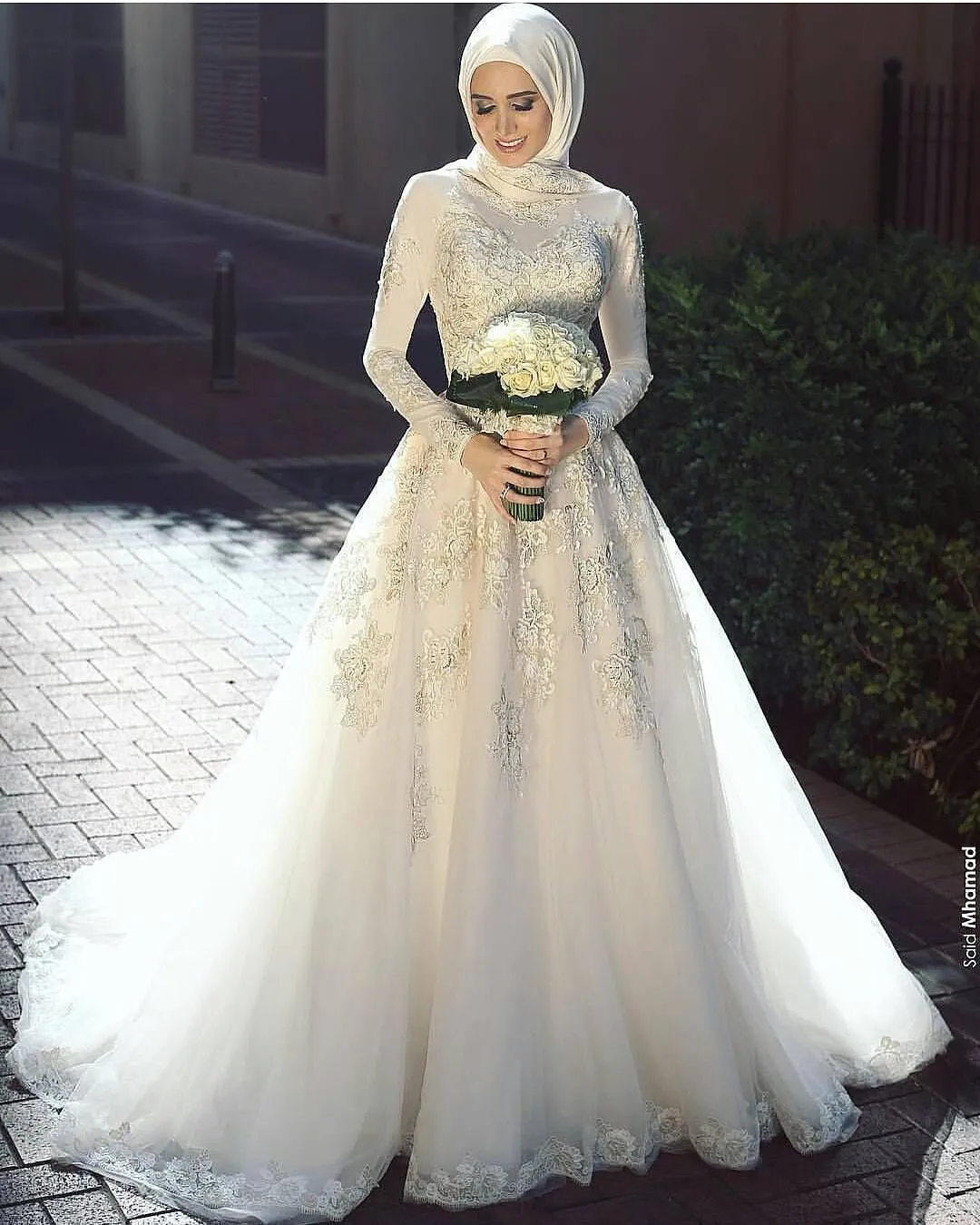Introduction
Islamic wedding dresses, steeped in rich cultural heritage and religious significance, are a celebration of love, family, and faith. At the heart of these ceremonies stands the bride, adorned in a wedding dress that elegantly balances tradition, modesty, and personal style. This exploration delves into the world of Islamic bridal fashion, uncovering the intricate designs, cultural influences, and the essence of grace that characterizes these exquisite gowns.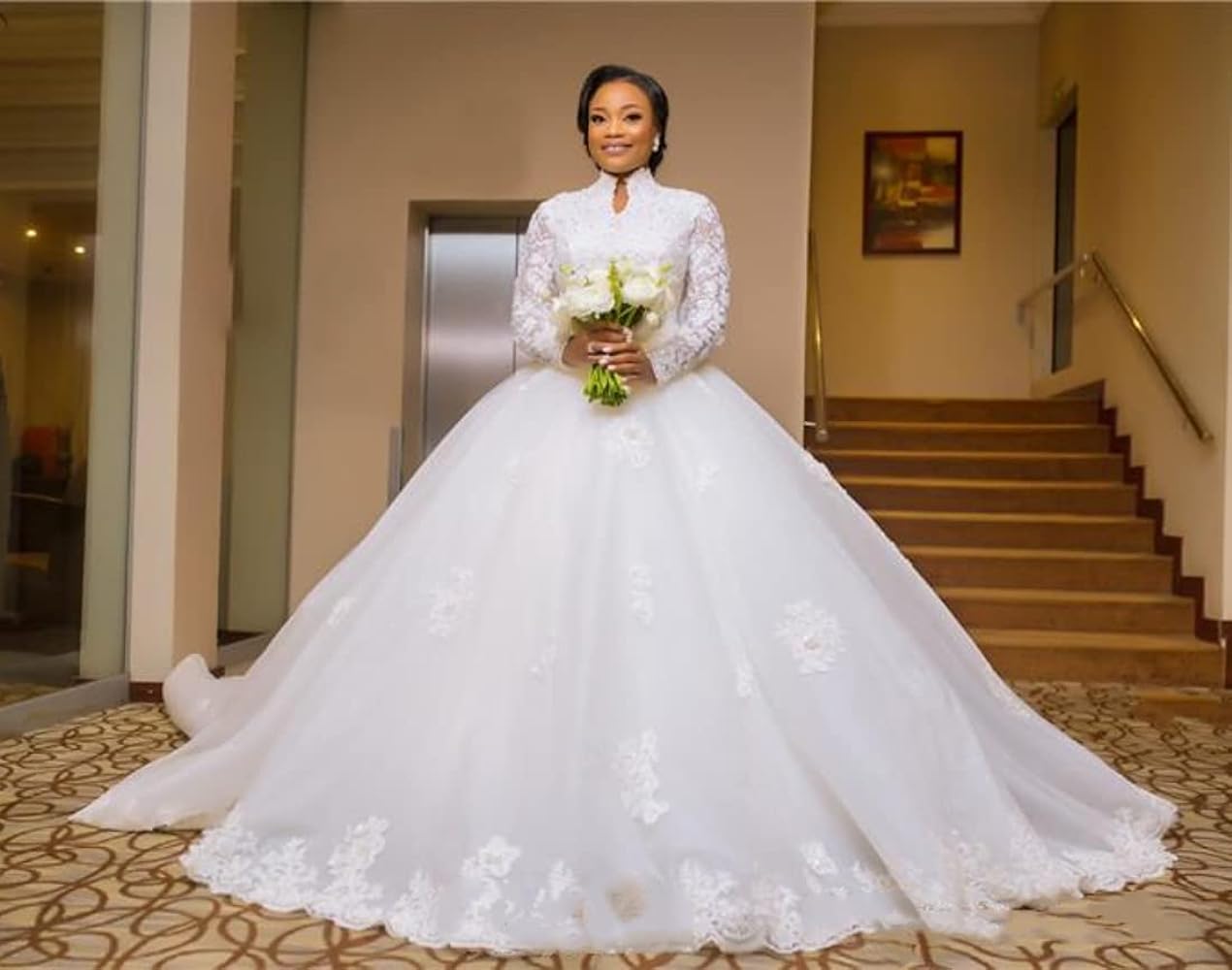
1. The Essence of Modesty
Central to Islamic wedding dresses is the principle of modesty, embodied through covering the body except for the face, hands, and sometimes feet. Designers skillfully interpret this requirement into breathtaking ensembles that respect religious guidelines while accentuating the bride’s beauty. Long sleeves, high necklines, and flowing fabrics such as chiffon, silk, and lace create an aura of sophistication and demureness.
2. Cultural Diversity and Influence
Islamic weddings span across a vast geographical and cultural landscape, from Morocco to Indonesia, each region infusing its unique flavor into the bridal attire.
- Moroccan Influence: Rich with intricate embroidery and vibrant colors, Moroccan-inspired dresses feature geometric patterns and golden accents, echoing the nation’s Berber heritage.
- Middle Eastern Elegance: Bridal gowns from countries like Saudi Arabia and the UAE often incorporate luxurious fabrics, such as silk and organza, with delicate beading and crystal embellishments, reflecting opulence and regality.
- Pakistani & Indian Splendor: These dresses are known for their intricate thread work, zari, and resham embroidery, often incorporating traditional motifs like paisleys and florals, along with the use of shimmering fabrics like jamawar and banarsi silk.
3. Modern Interpretations
Contemporary Islamic bridal fashion sees designers innovatively blending traditional elements with modern aesthetics. This fusion results in dresses that feature clean lines, minimalist designs, or even Western-style ball gowns adapted to Islamic sensibilities. Some brides opt for separates, pairing ornate crop tops with full-length skirts or palazzo pants, offering a fresh take on traditional attire.
4. Accessorizing with Tradition
Accessories play a vital role in completing the bridal look, often incorporating symbolic elements. Hijabs, dupattas, or sheer veils are draped artistically to enhance the ensemble’s elegance. Intricate headpieces, tiaras adorned with pearls and crystals, and traditional jewelry like chokers, maang tikkas, and jhumkas further elevate the bridal attire.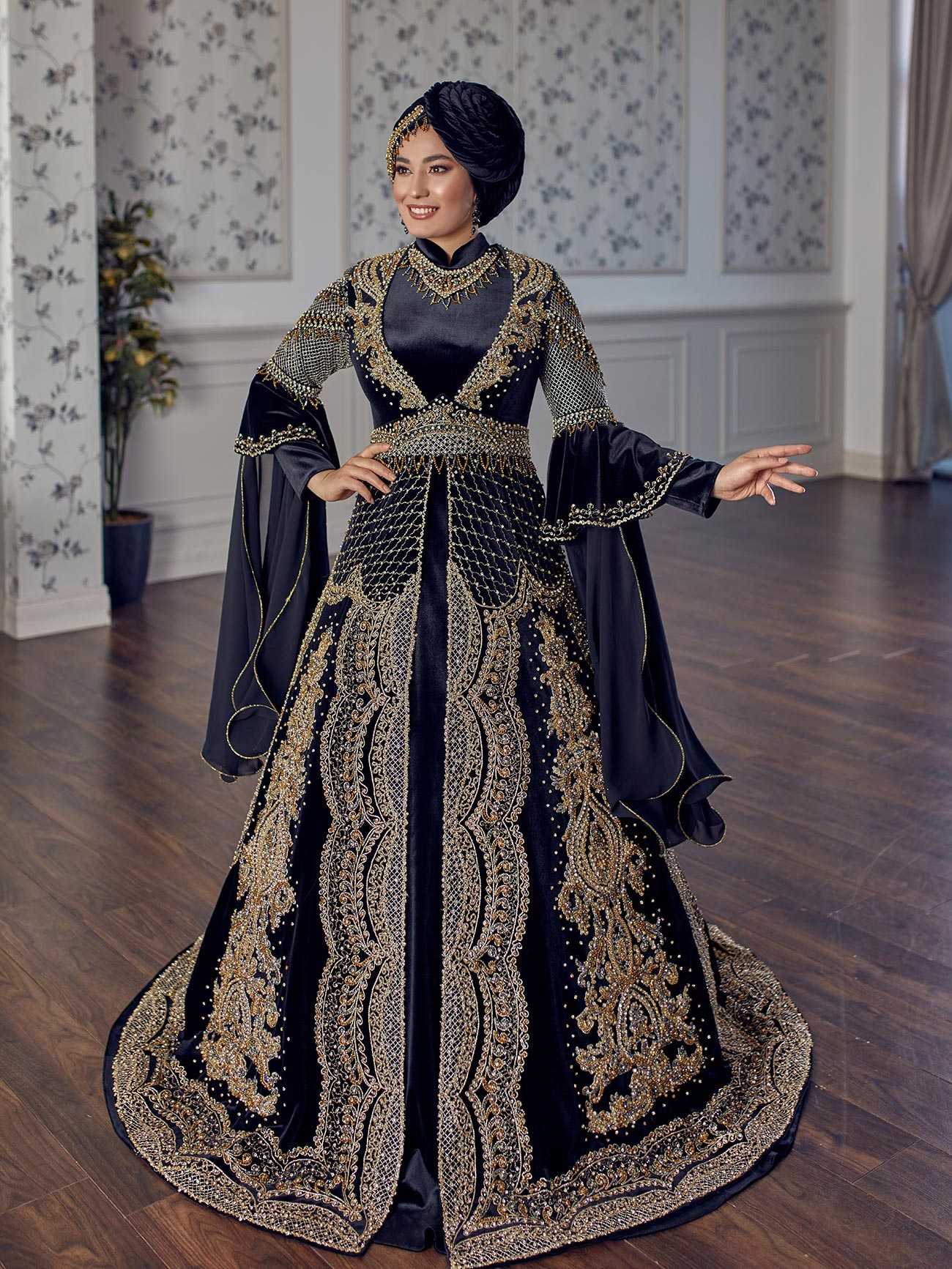
5. Colorful Celebrations
While white is a popular choice symbolizing purity and innocence, Islamic wedding dresses can also be found in a spectrum of colors, each with its own symbolism. Deep reds signify love and prosperity, blues represent tranquility, and gold symbolizes wealth and royalty. These hues reflect the bride’s personality and cultural background.
6. Finding the Perfect Dress
Choosing the perfect Islamic wedding dress is a deeply personal process. Brides often work closely with designers to create a custom gown that reflects their individuality while respecting cultural and religious norms. It’s essential to start early, research extensively, and have a clear vision of the desired style, fabric, and color palette.
7. The Role of Family and Community
In many Islamic cultures, the selection and design of the wedding dress often involve close family members, particularly mothers and sisters. This collaborative process strengthens familial bonds and ensures that the dress resonates with the family’s traditions and preferences. It’s not uncommon for heirloom pieces, such as vintage jewelry or embroidered panels, to be incorporated into the dress, passing down generations of blessings and love.
8. Bridal Preparation Rituals
The preparation of the bride goes beyond just dressing up; it’s a spiritual and emotional journey. Many brides observe rituals like the henna ceremony, where intricate henna designs are applied to the bride’s hands and feet, symbolizing joy, beauty, and blessings for the marriage. This practice is common across many Islamic cultures and adds another layer of tradition and artistry to the bridal experience.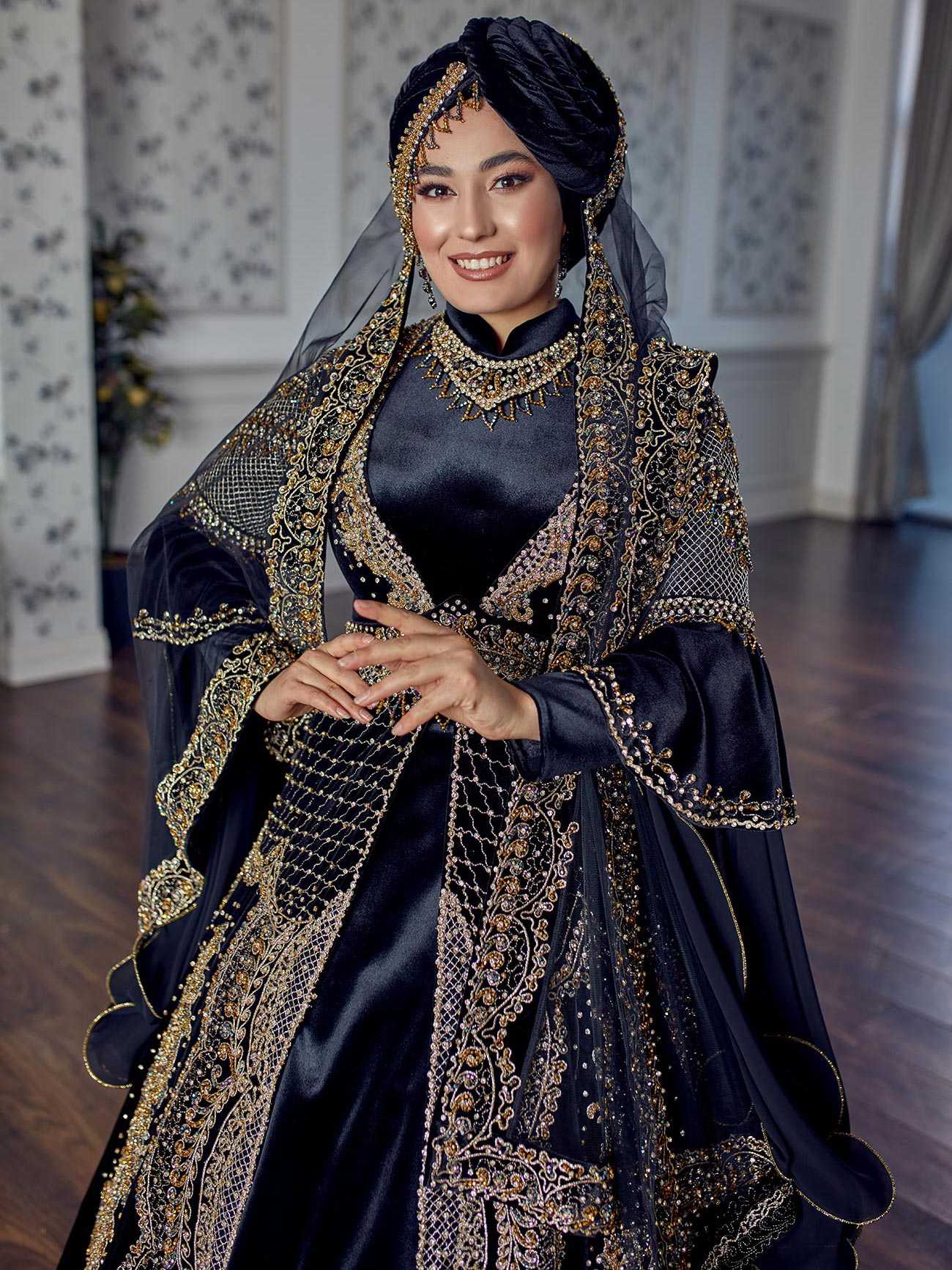
9. Embracing Sustainability
As awareness about environmental impact grows, eco-conscious brides are opting for sustainable and ethically sourced materials for their wedding dresses. This includes using organic fabrics, recycled materials, and supporting local artisans who employ traditional, handcrafting techniques. Such choices not only contribute to a greener future but also infuse the dress with a unique story and positive energy.
10. Capturing Memories
The wedding day, adorned in a meticulously chosen dress, becomes a cherished memory captured in photographs and videography. Many brides choose to have pre-wedding photoshoots, showcasing their dress in a setting that complements its beauty, whether it’s a historic mosque, a lush garden, or a romantic beach. These images become a visual testament to the blend of tradition, culture, and personal taste that went into creating the perfect Islamic wedding dress.
11. Beyond the Wedding Day
An Islamic wedding dress is more than just an outfit; it’s a piece of wearable art that carries emotional and cultural significance.
After the wedding, many brides preserve their dresses as a keepsake,
passing them down to future generations or repurposing parts of the dress into smaller mementos.
Others might donate or sell their dresses,
allowing another bride to experience the joy and grace that the dress brought them.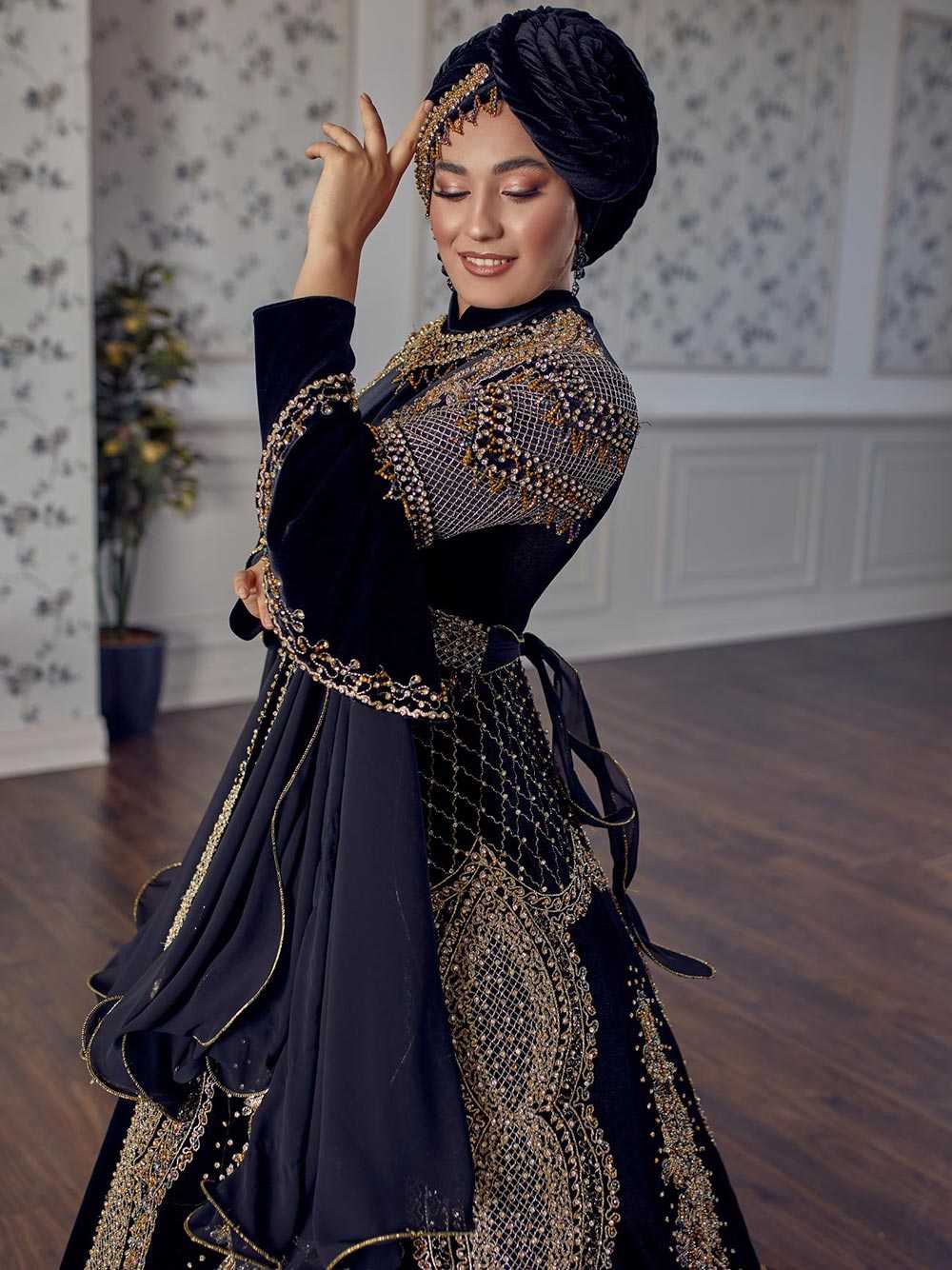
12. Capturing the Moment
The beauty of an Islamic wedding dress is often immortalized through photography and videography.
Many brides opt for pre-wedding shoots or ‘nikah portraits,’
where the focus is on capturing the intricate details of the dress and the bride’s regal aura.
These images serve as a timeless reminder of the day,
preserving the artistry of the dress and the emotions it evoked.
13. Post-Wedding Traditions
In some cultures, the wedding dress continues to hold significance even after the ceremony. For example, during the walima (the post-wedding feast hosted by the groom’s family), the bride may change into another traditional outfit, continuing the celebration and showcasing another aspect of her cultural heritage. Alternatively, the dress might be displayed or preserved as a family treasure, symbolizing the beginning of a new chapter.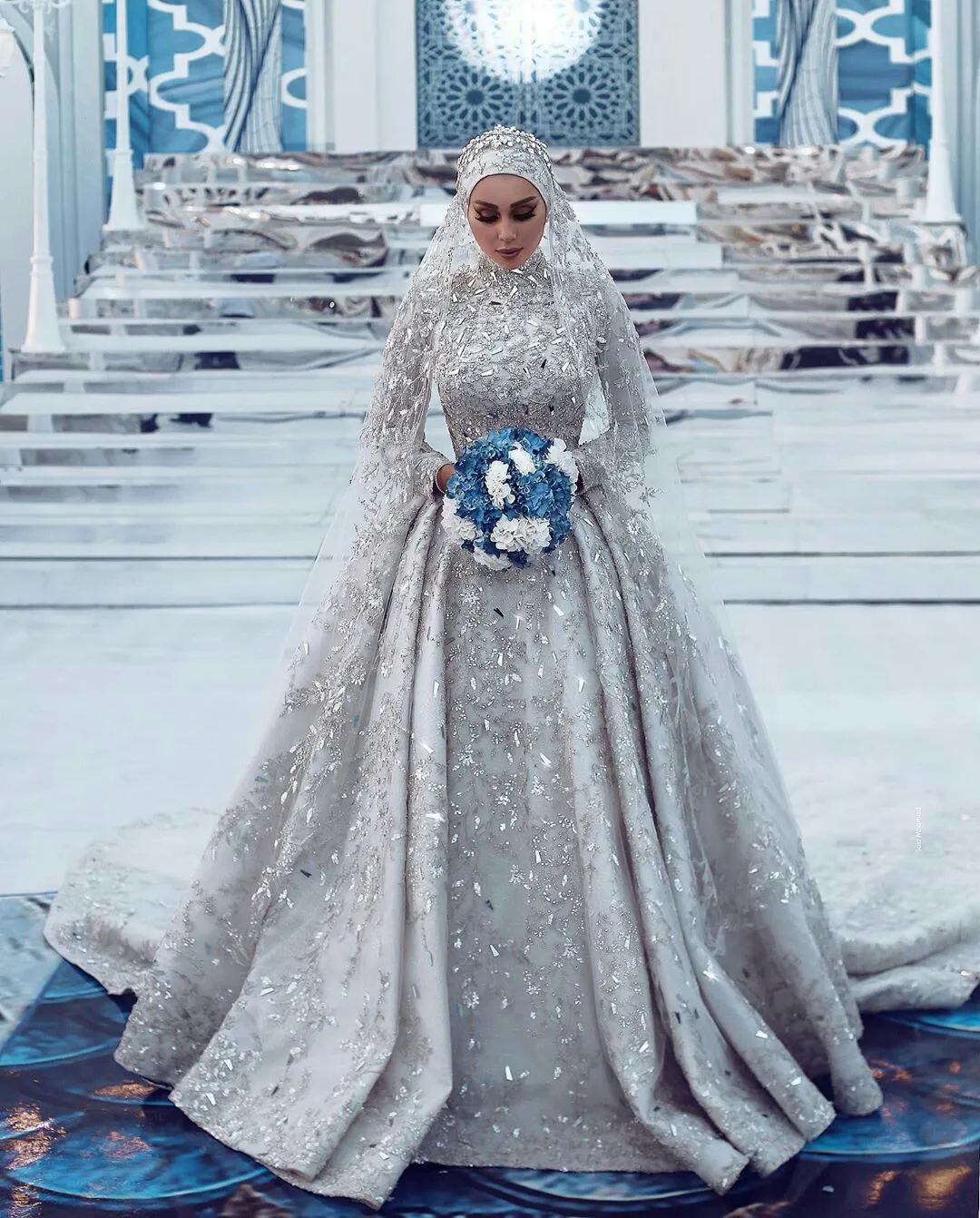
In conclusion
Islamic wedding dresses are a testament to the harmony of tradition and modernity,
where modesty meets style in a symphony of intricate details, luxurious fabrics, and cultural pride.
They encapsulate the essence of a bride’s beauty, grace, and faith on her special day,
making each gown a wearable narrative of love, heritage, and elegance.
As these dresses continue to evolve with time,
they remain a testament to the enduring elegance and grace that defines Islamic weddings worldwide.
